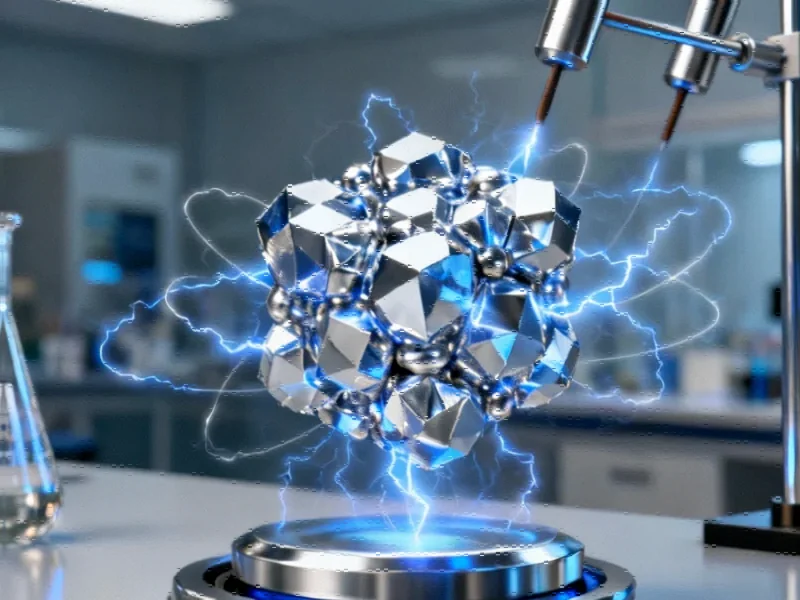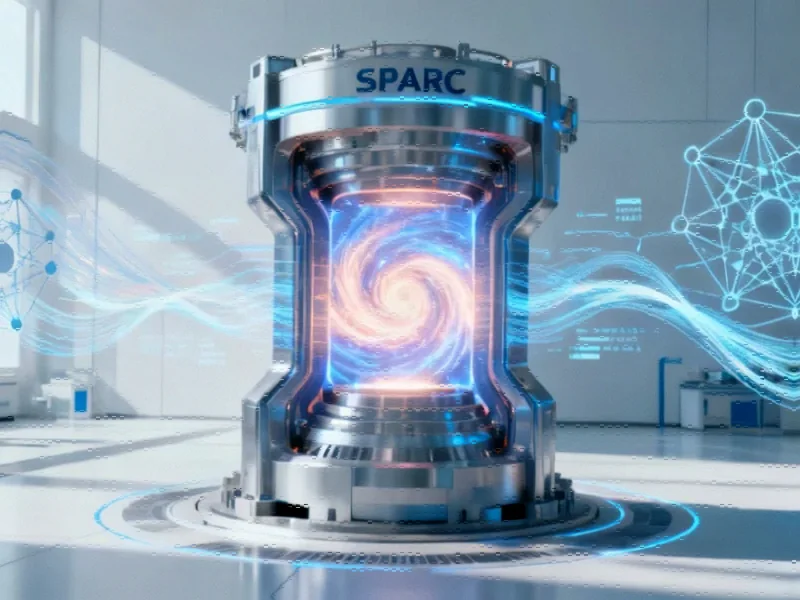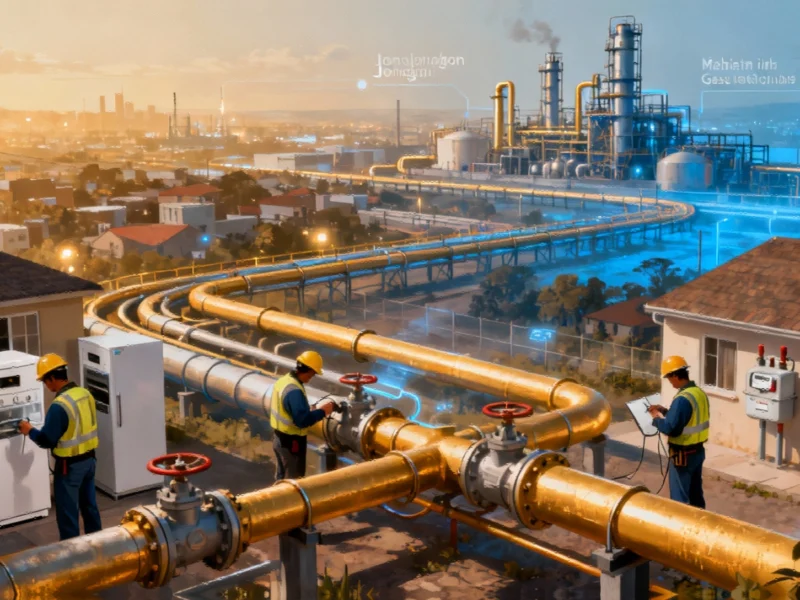Revolutionary Self-Repairing Catalyst for Green Hydrogen
Researchers have reportedly developed a groundbreaking manganese-oxide-based electrocatalyst system that maintains stability despite the voltage fluctuations common to renewable energy sources, according to findings published in Nature Sustainability. The system incorporates a self-healing mechanism that allows it to regenerate after degradation, sustaining high current density of approximately 250 mA cm⁻² under fluctuating voltage conditions in acidic media – a environment where conventional catalysts typically fail rapidly.
The Voltage Fluctuation Challenge
Industrial analysts suggest that voltage instability represents a fundamental barrier to using solar and wind power for electrolysis, the process that splits water into hydrogen and oxygen. Sources indicate that conventional 3d-block metal catalysts degrade irreversibly when subjected to the power surges and drops inherent to renewable energy sources. The report states that when electrode potential exceeds 1.8 V versus the reversible hydrogen electrode in acid, manganese oxide catalysts typically form soluble Mn⁷⁺ species that dissolve into the electrolyte, permanently deactivating the catalyst.
This degradation problem has hampered efforts to scale up green hydrogen production, as recent technology developments in renewable energy integration have highlighted the need for more resilient electrochemical systems. The challenge mirrors broader infrastructure resilience concerns across multiple sectors.
Redox Pathway Engineering Breakthrough
According to the research team, the solution lies in strategically incorporating the Guyard reaction into the oxygen evolution reaction cycle. This comproportionation reaction (4Mn²⁺ + Mn⁷⁺ → 5Mn³⁺) enables dissolved Mn⁷⁺ to react with Mn²⁺ OER intermediates to generate Mn³⁺, which can then be electrochemically oxidized back to the bulk oxide. The report states this creates a continuous regeneration pathway that makes the manganese oxide system resistant to voltage fluctuations.
Researchers confirmed the mechanism using multiple spectroscopic techniques, including ultraviolet-visible spectroscopy, which tracked the disappearance of Mn⁷⁺ absorption bands, and electron paramagnetic resonance, which detected the formation of Mn³⁺ species. Further verification came from X-ray absorption spectroscopy measurements that confirmed the oxidation state changes during the regeneration process.
Exceptional Performance Under Realistic Conditions
When tested under programmed pulsed voltages simulating renewable energy intermittency, the system demonstrated remarkable durability. Sources indicate that with phosphate ions present to promote the Guyard reaction, the catalyst maintained oxygen evolution activity for over 2,100 hours (600 cycles) with only 10% loss in performance. This represents approximately 15 times greater stability than the same system operating without the comproportionation pathway.
Analysts suggest the findings come at a critical time for the hydrogen economy, as industry developments increasingly focus on overcoming the technical barriers to renewable-powered electrolysis. The research demonstrates how controlling catalytic cycles at the molecular level can yield dramatic improvements in practical performance.
Manganese’s Unique Redox Chemistry
The report emphasizes that manganese’s wide range of oxidation states (2+ to 7+) enables this unique regeneration capability. When researchers tested cobalt, iron, and nickel oxides under identical conditions, none demonstrated sustained OER activity under voltage fluctuations, even with phosphate present. Cobalt oxide showed higher initial current (330 mA cm⁻²) but completely lost activity after just 20 voltage pulses.
This manganese-specific resilience highlights the importance of fundamental material properties in advancing clean energy technologies. The approach represents a significant departure from previous self-healing strategies that relied on electrodeposition of lower-valence metal ions.
Broader Implications for Sustainable Technology
The development arrives alongside other related innovations addressing stability challenges in electrochemical systems. Researchers reportedly believe this redox pathway design principle could inspire new approaches to catalyst stability across various applications, potentially impacting multiple sectors of the clean energy landscape.
As the world addresses complex sociotechnical challenges, breakthroughs in fundamental materials science may provide crucial building blocks for sustainable infrastructure. The manganese oxide system demonstrates how designing regeneration directly into catalytic cycles could enable more reliable integration of renewable energy with industrial processes.
This article aggregates information from publicly available sources. All trademarks and copyrights belong to their respective owners.
Note: Featured image is for illustrative purposes only and does not represent any specific product, service, or entity mentioned in this article.



